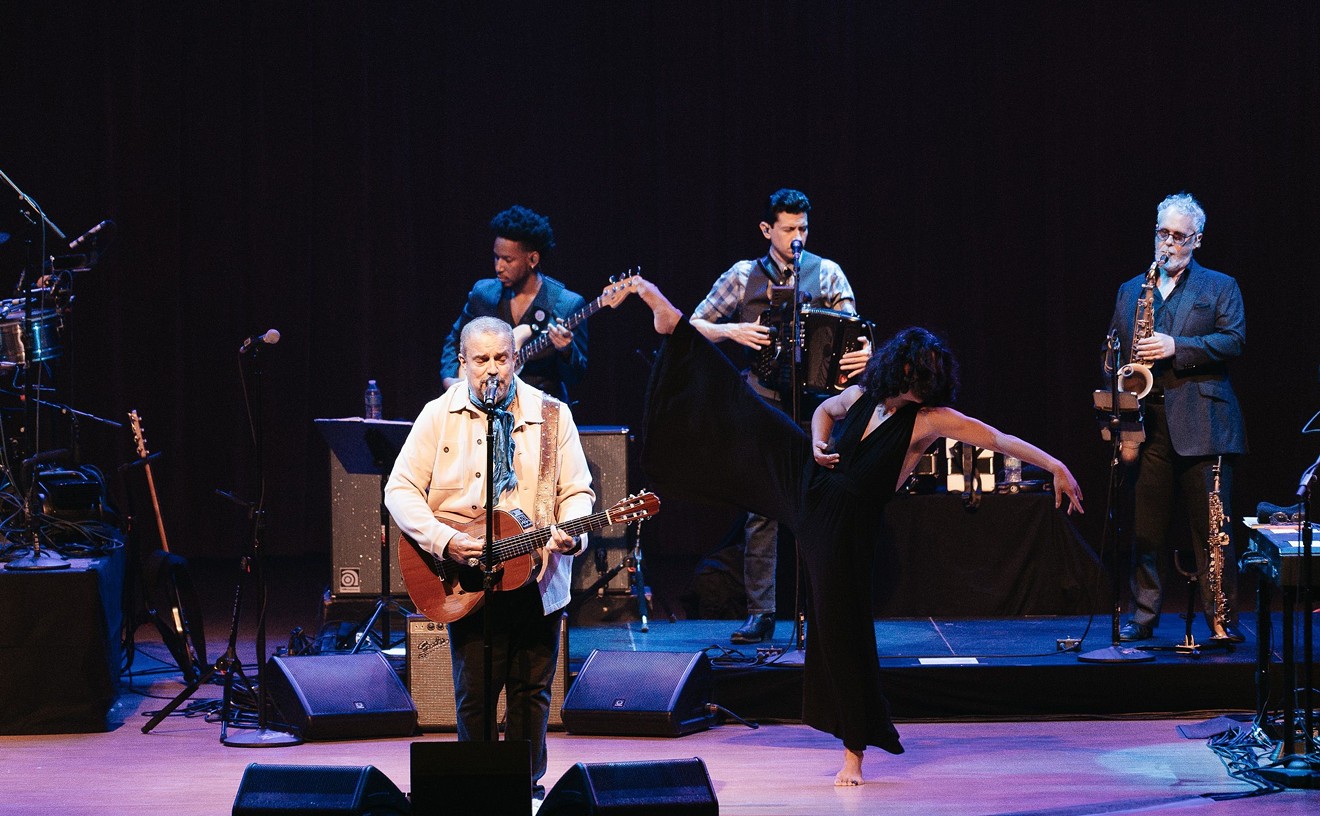-- Ricky Nelson, "Teenage Idol"
Teenage angst has paid off well/Now I'm bored and old.
-- Kurt Cobain, "Serve the Servants"
I love Britney Spears. I cherish 'N Sync. I adore the Backstreet Boys, Boyzone, Monica, 98 Degrees, B*Witched, Divine, C-Note, Usher, Cleopatra, and Five. I don't mind that they all sound alike. The resemblances are comforting; they harken back to teen idols of the early '60s, the bubble-gum pop of the early '70s, and, especially the pre-grunge hit machines of light, danceable pop made for and by high schoolers. The new breed might be more concerned with image and marketing than music, but did that stop the New Kids on the Block or New Edition? Would that have hindered Bobby Vee, Bobby Rydell, or Bobby Sherman? Or the Banana Splits, the Archies, and the Partridge Family?
Every generation has its rash of music that is little more than a lifestyle accessory for the pubescent set; it's just one part of the larger ebb and flow of pop music. Still, the current ubiquity of packaged teen acts hasn't been seen since the end of the '80s, when R&B-lite groups ruled the airwaves.
One need look no further than the local concert calendar, which features upcoming shows by chart-topper Britney Spears and former New Kid on the Block Joey McIntyre. McIntyre's appearance is especially telling, as it seems even over-the-hill teenyboppers are trying to cash in on the craze. Current albums from McIntyre and Jordan Knight find the Old Kids Who Have Been Around the Block working the teeny-pop sound to little avail, a far cry from the late '80s when the NKOTB ruled the earth under the guidance of their Svengali, Maurice Starr. NKOTB had merchandise -- dolls, backpacks -- and they had hits -- "Step by Step," "You Got It (The Right Stuff)," "I'll Be Loving You (Forever)" -- and teen girls ate up their R&B-lite tunes during their short reign.
From the synchronized dance moves to the one-of-each composition of the group's personality (the cute one, the young one, the troublemaker, Sneezy, Dopey...), Starr's pop formula has been adopted by aviation-mogul-turned-Svengali Louis Pearlman. In his creation of the B Boys and 'N Sync, the Orlando-based Pearlman has turned himself into the latest king of the teen market, on par with Starr and Elvis' Colonel Parker.
Like his predecessors, Pearlman understands marketing more than music. Pearlman originally rented planes to NKOTB; but he wanted to get closer to the source of income. Not only has he made a fortune with the Backstreet Boys by spicing vanilla pop with New Jack beats and R&B harmonies, he has created his own competition with the little-different 'N Sync.
Of course we find it easy to make fun of the music that the mall kids love. But consider that teens were the first to squeal at Frank Sinatra, swarm Elvis Presley, and chase the Beatles. That these artists later became respected icons and innovators demonstrates the influence teens and their money can have on popular culture. The breakthrough from puppet to credible performer is a serious jump, though. The formula seems to be that genuine talents will out.
It's just that now most promoters and entertainment companies, such as Pearlman, are not interested in helping performers break through by taking chances creatively. They're interested in cashing in.
And the power of the teen dollar in pop culture has never been more evident. Consider the success of the WB Network, Titanic, and the revival of teen scream films such as the Scream and I Know What You Did Last Summer franchises. That's the reason so much of today's popular entertainment is aimed at the teen market, cheekily dubbed "Generation Y."
The target audience for teen entertainment products is comprised of 56 million people with $275 billion in disposable income. According to a Rand poll last January, girls 13 to 15 years old had an average of $50.90 a week to spend in 1997, of which they drained $45.10. That's a CD, a movie, a couple of fast-food meals, and then some per week. (Or it could cover 2 of the 24 T-shirts 'N Sync offers on its Website.)
Britney Spears, camped out in the upper regions of the charts with her debut album, ... Baby One More Time, has been seeing a lot of that allowance money. Spears, who shares a manager with 'N Sync, a label with the Boys, and songwriters with both, owes her fame to marketing and her Lolita-like video for her "... Baby One More Time" single, which shows the teen flaunting her burgeoning physical assets -- much as Elvis used his pelvis -- to the delight of older viewers as well as the teen target audience.
Before her disc was released, Spears toured the malls of America with two dancers and backing tapes, just like Tiffany did a decade ago. Unlike Tiffany, her economic clout now travels well beyond the mall. She had a number-one single and album the week of Baby's release, the first time a solo debut has accomplished that. The album has now sold more than three million copies. Using corporate/teen synergy, the onetime New Mickey Mouse Club star opened part of 'N Sync's tour, and a hidden track on her CD is an advertisement for the Backstreet Boys' album, Millennium, which sold more than a million copies in its first week, a new sales record. Spears' appeal is primarily aesthetic -- pouty lips, allegedly augmented breasts -- and her album offers little of substance; lite-dance fare, a couple of saccharine ballads, a Sonny and Cher cover, the end.
Eight years ago things were much different. In the fall of 1991, Nevermind, Nirvana's second record, was released, and in January 1992 it knocked Michael Jackson's Dangerous off the top of the charts. Things were different for a while; grunge made good on a lot of punk's promises, smacking the Color Me Badds and Wingers of the world out of public consciousness. Nirvana and its ilk were the polar opposite of the slick, prepackaged teen groups; they wore flannel, didn't style their hair, and sounded angst-ridden.
But by the time Kurt Cobain killed himself five years ago, the beginning of the end was already under way for grunge. For people who thought grunge was the sign that commercial and artistic success could coexist, Cobain's death was their Altamont. The pendulum of commercial taste began swinging the other way, toward nice, toward safe.
That's not to say that the same people who once bought Mudhoney records are now singing along to the Backstreet Boys. Korn, Rob Zombie, and Rage Against the Machine are still exploiting the angry teen populations, and Pearl Jam continues to make music chiefly for postadolescent listeners. The point is that teen music -- and especially teen pop -- has captured the Zeitgeist the way Lollapalooza once did.
A backlash against the current crop of teenyboppers is inevitable as well. The prefab boy bands and nubile sirens -- acts that don't write music, don't play instruments, and dance in choreographed routines -- have a shelf life of less than five years before overexposure and overmerchandising kill them. The current teen retinue is already showing signs of weakening. The problem isn't just overexposure; the teen artists themselves are revolting against the confines of their packaged stardom. Last October, for instance, the Backstreet Boys sued Pearlman because their original contract stipulated that the Boys pay 43 percent of their net income to Trans-Continental Records, a Pearlman-directed company.
But it should be remembered that teen groups serve a useful purpose in the larger pop-music weave: they help inspire outrage and disgust in the young musicians who will ultimately rise up against their bland beats and homogenous sounds to forge a new popular sound. Every picture of Britney Spears wearing hot pants in Rolling Stone is, in a sense, one more bullet for the revolution.
While mindless teen-pop never completely goes away (after all, Ace of Base and Soundgarden shared the charts five years ago), its influence naturally wanes over time, giving way to more daring forms.
Insurgent rock 'n' roll -- the kind of music capable of changing the overall rock 'n' roll scene -- has always moved in fits and starts, progressing like a corkscrew; moving forward, looping back on itself, and lurching forward again. In many ways, revolutionary music is reactionary: It responds to the excesses of popular culture. And soon enough, it becomes popular culture.
Punk, for instance, was a reaction to the economics of the early '70s and the glam excesses of '70s rock as well as a continuation of what earlier insurgent bands (the Stooges and Velvet Underground) were doing at the very beginning of the decade. Punk got big, sold out, and died out, giving way to '80s hair-metal. But even bands like Guns n' Roses and Poison were clearly influenced by more ambitious acts, such as the New York Dolls and the Ramones, and hated the pin-up bands of their era. Grunge combined metal and primal punk, sludgy guitars and simple primacy. But as soon as Alice in Chains T-shirts were available at malls across the country, grunge was dead as a revolutionary -- if not economic -- force.
Either way, the current wave of teen idols will survive their time in the sun for only a little while before serving as compost for the next insurgent movement. That's why I don't begrudge Britney her success. I love hearing her breeze her way through "... Baby One More Time," because I know the next wave of musical revolutionaries are out there, listening, knowing that their time is coming soon.
Britney Spears appears Monday, June 28, 7:30 p.m., at the Pompano Beach Amphitheatre, 1801 NE Sixth St., Pompano Beach. Joey McIntyre plays the same venue Friday, July 2. Call 954-523-3309.










